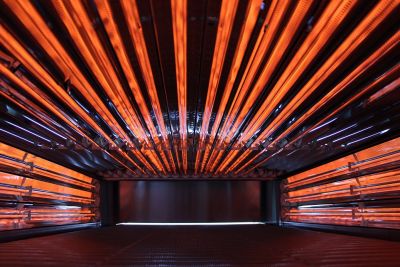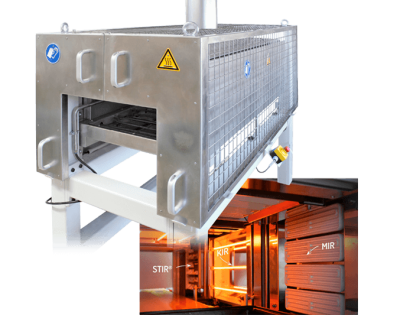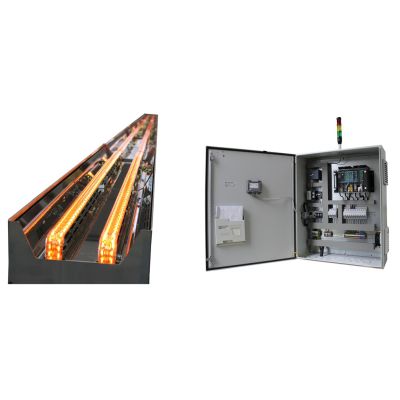Annealing plastic: The principle for increasing the resistance of plastic
Annealing is the term used to describe the heat treatment of plastics to reduce mechanical stresses and the targeted modification of the microstructure. Material stresses can arise during the production and joining of plastic components. This not only reduces the quality and service life of the finished product, but can also lead to functional impairment or complete failure in an emergency. Last but not least, splintering plastic vessels or Plexiglas panes pose an immense risk of injury. During tempering, the increased temperature increases the mobility of the atoms, which compensates for structural defects and improves the crystal structure. Many thermosetting plastics such as resins and adhesives require heat to cure. The addition of heat, which serves to change the phase from liquid to solid, is called curing or annealing.
Infrared radiation as an optimal heat source for annealing plastics
Infrared emitters are excellently suited for providing heat during the annealing process, as they have a high power density as well as targeted controllability. This ensures a systematic tempering or curing process. The non-contact temperature measurement by means of a pyrometer and the control of the emitter power according to the set temperature ensure an optimised process sequence. Due to the direct and aligned heat input, infrared radiation heats the component to be tempered only where it is required. This saves energy and time.
Was ist beim Kunststoff Tempern zu beachten?
The higher the temperature of a material, the more internal energy it has to relieve mechanical stresses or harden. However, the temperature must not reach or exceed the material-specific melting point. In addition, a uniform annealing process within a component requires homogeneous heating. The optimised arrangement and alignment of the infrared emitters, combined with temperature control, ensures this automated and reliable annealing process.
The advantages of infrared radiation for plastic tempering in an overview
- High heat flux densities, heating within seconds
- Direct heat transfer without contact with the material
- Specific application possibilities: large surfaces can be heated as well as small sections or curved parts
- Economical mode of operation
- Low energy loss
- High efficiency
- Simple and safe operation due to defined temperature control and ramp functions
Ingolf Jaeger
Head of Sales
Dipl.-Ing. Mechanical Engineering
E-Mail: i.jaeger@ibt.de
Phone.: +49 (0) 3731 1683-15


